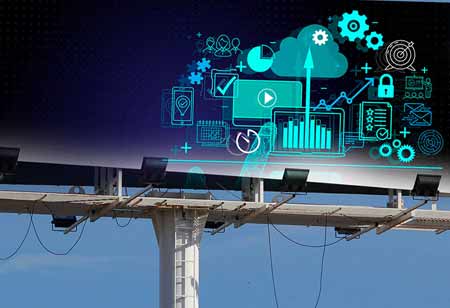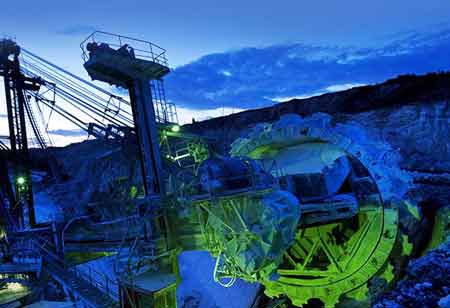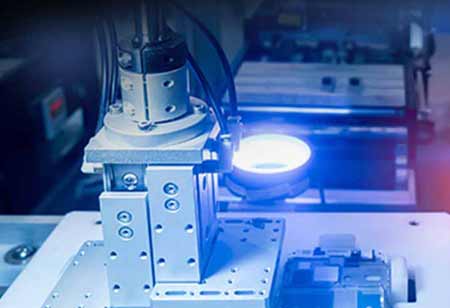THANK YOU FOR SUBSCRIBING

Drone Tech & Advancements In The UK
Graham Brown, CEO, ARPAS-UK

 Graham Brown, CEO, ARPAS-UK
Graham Brown, CEO, ARPAS-UKWe all know that drones have helped businesses make great strides across the board, in particular in terms of delivering solutions that can be “safer, faster, cheaper and greener”. This is across a lot of different industries with the greatest impact being seen in the construction industry.
So, what’s next for drones?
Regulation:
In terms of regulation, much is happening and quickly.
- Registration comes into effect at the end of November 2019 for all operators of drones above 250g in weight. This will include an online test and education piece. Registration is set to cost £16.50 per operator. It will apply to both recreational and commercial drone operators. The platform is currently being developed.
- E-conspicuity (EC): The key principle of this is that each aircraft should be conspicuous to all other relevant airspace users. The Civil Aviation Authority (CAA) has recently concluded a consultation into this and shared their findings. There is an appetite within the aviation community to engage with EC. However, this is qualified by a desire for any EC solution to be practical and deliver value to the users. Whilst the transmit, receive and re-broadcast approach to EC to internationally accepted standards should offer the greatest safety benefits to users, it is noted that a flexible approach is needed appropriate to the circumstances of particular categories of aviation.
- UTM traditionally stands for Unmanned Traffic Management (although there are many variations on this), and refers to systems created to manage airspace. A good way to look at UTM is that it’s a system similar to the aviation Air Traffic Control but focused on unmanned aircraft. It is needed so that the airspace can be managed safely. Because of the volume of traffic and that fact the traffic is unmanned the UTM will have to be automated.
- Remote ID: This is where a drone has an electronic ‘licence’ plate, much like a car. The information is available remotely to an authorised person who wants to identify the drone and information about the operator. This system is not fully defined and there is, and will continue to be, considerable discussion as to whom the information should be made available.
EC, UTM and Remote ID need to all be able to work together to enable drone technology to integrate to its fullest within existing airspace and achieve the £42bn of benefits to the UK economy by 2030 that PwC have forecast.
The impact of drones will be felt not only in transportation and delivery of goods but also in urban air mobility and the movement of people. With regard to the future and the development of capability there are many innovations with both large and small companies involved in some exciting developments and trial projects. Of course regulation and legislation will have to adapt and the CAA are embracing innovation by implementing the CAA Sandbox to test and support new solutions. These currently include:
- Amazon who are working on a drone delivery project,
- NESTA who are working on the economic and social benefits drone technology will bring to UK cities,
- A consortium of Blue Bear, Cranfield University, Thales and Vodafone who are working together on tracking information to enable drones to fly in manned airspace,
- Altitude Angel and NATS who are working on projects to develop AI and Air Traffic Systems andVolocopter who are developing electronic drone taxis.
The aim of the Sandbox is to test and trial innovative solutions in a safe environment, in particular those solutions that do not fit within the existing scope of regulations, permissions, and exemptions.
Breakthroughs will enable the CAA to develop the regulations that are crucial to support the development of these emerging technologies. This is supported by the UK Government’s recent announcement of the Future Flight Challenge, which begins at the end of September 2019. It marks the start of a new wave of innovation for UK based businesses working in all aspects of aviation - from drone developers to city planners, from large aircraft manufacturers to the small airfields across the U.K. - the challenge is not to be underestimated. Future flight will bring stakeholders from the manufacturing, operations and regulatory fields of aviation to activate the third revolution in aviation. £300million has been confirmed as available to fund this and Transport Secretary Grant Shapps recently said:
“New technologies like electric and autonomous aircraft can help us tackle climate change, making journeys greener and working better for passengers.”
Physical developments for drone equipment:
Cages around drones are not new, but they are being seen more frequently. These cages enable drones to be flown safely in environments where the rotor blades could either harm or be harmed by what they are surveying, e.g. interior of pipes or the interior of buildings and their roofs.
Parachutes: in the US, Botlink were granted a waiver for flying over crowds as they were using Parazero Drone Safety Systems. In the event of a fault, the parachute deploys ensuring the drone falls to the ground at a speed that is not harmful to people. The drone performed multiple flights over crowds gathered in a stadium’s parking lots and provided important, real-time footage for local law enforcement and media companies.
Geo Fencing is a built in feature of software that uses Global Positioning System (GPS) and Radio frequency identification (RFID) to define the geographic boundary and helps prevent the drones from flying near sensitive locations such as airports, prisons, nuclear power plants etc. In certain locations the drone will not take off in a geofenced area without special authorization.
5G: This is set to make Emergencies and Disaster Situations much easier to coordinate. During 2018’s deadly Camp Fire in Paradise, California, DJI flew more than 500 drone missions to map the entire fire zone. It fed 360-degree views to first responders during the battle to help fight the blaze, and produced before and after images of the destruction. The data gathered in the time available convinced the response teams of the benefits of using drones. With greater speeds available to drones, this data gathering will be faster and enable more lives and property to be saved.
In conclusion we can see that Drone Technology is becoming more and more advanced daily. The use will initially focus on avoiding “working at height” accidents because drones will take over many roles to avoid workers having to work at height. The same will be true for work in confined spaces or areas that are dangerous for people. Often there will also be the added benefit of the reduced cost and reduced time to complete the job. An easy example would be avoiding the time and cost of deploying scaffolding if a drone can be used instead. The benefits won’t stop there. The drone will provide a full electronic record of an inspection that can be used as a comparison with future activity. The same is also true for progress reporting. In the transportation of goods and people the opportunities are vast. When they are delivered will depend on how fast the safety cases can be proven so that the UK’s excellent record of safety is maintained. Lastly, there will be applications and use cases that develop over the next twenty years that we have not even thought of yet. Exciting times ahead!
Read Also




















ON THE DECK